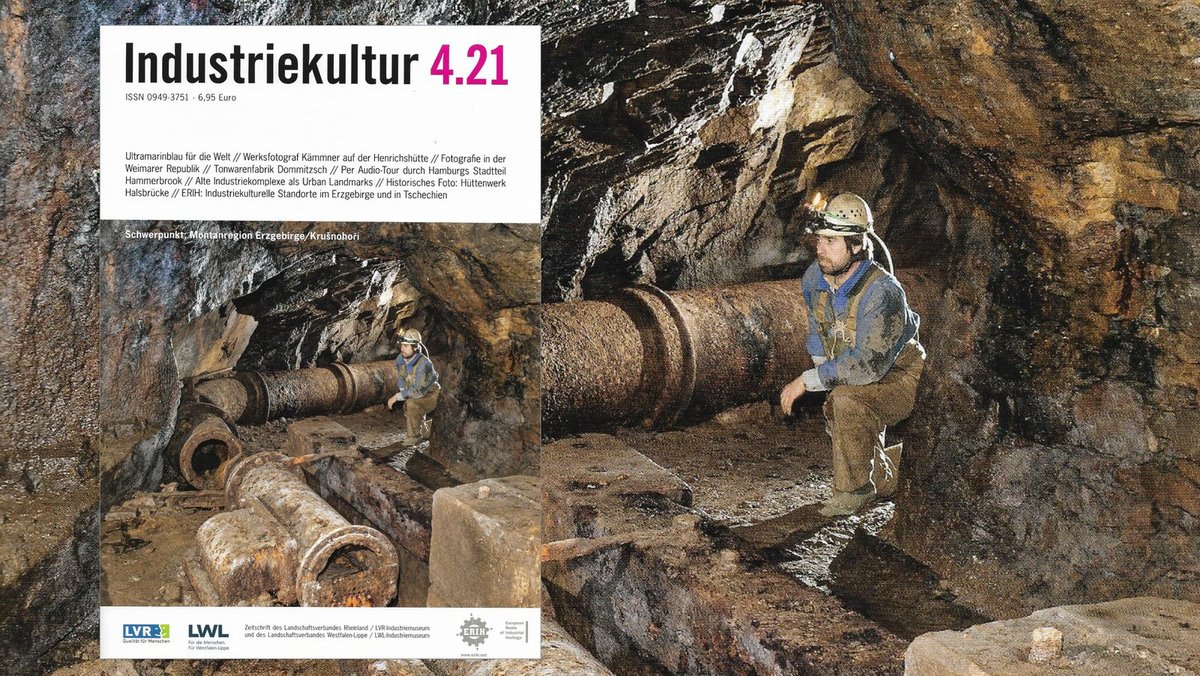
German magazine Industriekultur, No. 4.21: Ore Mountains/Krušnohoří Mining Region
World Heritage Mining Region Erzgebirge/Krušnohoří – in 2019 the time has come! The award recognises the shared Saxon-Bohemian cultural landscape as a groundbreaking catalyst of modern economic and social structures by exporting mining knowledge and innovating all aspects of life – take the silver coin, for example, for its pioneering role in early capitalist monetary patterns, or the complex system of mining and smelting, water management and transport. ERIH features the most important sites of industrial culture.
A key role is played by Freiberg, a major mining centre in the region and the first free mining town in Germany following early traces of silver in 1168. It is also home to the Bergakademie (Mining Academy), founded in 1765, the world's oldest mining institute still in existence and the place where, for example, the elements indium and germanium were discovered in the 19th century. The Freiberg Municipal and Mining Museum reveals the interconnections involved and highlights the remains to be experienced.
Many sites in the Ore Mountains address specific aspects of the region's mining history and thus create a diverse mosaic. Saigerhütte Museum, with its six-tonne, operational wrecking hammer, is all about copper processing, including the fact that the rooftop copper produced here was used to cover St. Stephen's Cathedral in Vienna, for example. In the Ehrenfriedersdorf tin mine, visitors get to know the everyday life of miners in detail – starting with the ascent to the winding tower and ending with a maze of galleries underground. The "Stary Martin" (Old Martin) mine adit in Czech Krupka owns the longest lode of tin ore in Central Europe, and the Altenberg Mining Museum illustrates the background of a huge crater shaping the landscape, caused by the collapse of extensive underground galleries.
That the Ore Mountains have more to offer than mining history is revealed by places like the German Museum of Watchmaking in Glashütte or the museum in Schlettau Castle, which explores, with its passementerie workshop, a very particular branch of the textile industry. Another castle, Wildeck Castle in Zschopau, has a motorbike exhibition in honour of the Dane Jørgen Skafte Rasmussen, who emerged as the world's leading motorbike manufacturer with his Zschopau factory and DKW brand. Just ten kilometres away, Augustusburg Castle demonstrates how much he shaped the region: its 175 exhibits trace the complete technological evolution of motorbikes from 1885 to the present day.
ERIH report in Industriekultur 4.21

